This is the devastation left behind after 26 long years of civil war.
Thousands died in Sri Lanka during the government’s clash with the ethnic Tamil people, fighting for their own homeland.
Now the war zone is a wasteland, its earth scorched and pocked by craters. Cars and trucks lie overturned near bunkers beside clusters of battered tents.
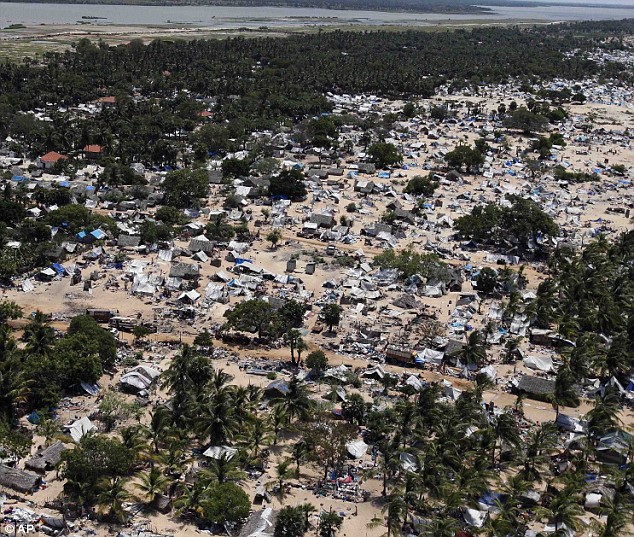
Wasteland: The ruins of the north-east coast of Sri Lanka as seen by helicopter over the weekend
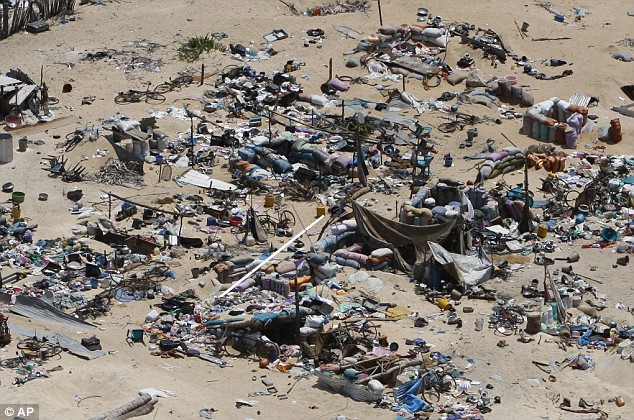
Civilians’ belongings are scattered about the ground after the attacks
The government has denied firing heavy weapons into what had been a battlefield densely populated with civilians. But the helicopter tour the military gave U.N. Secretary General Ban Ki-moon and a group of journalists Saturday revealed widespread devastation.
Civilians who escaped the zone said they came under intense shelling from both the rebels and the government.
‘We ran for our lives from the shelling in the north,’ said one man who gave his name as Krishnathurai. ‘It was coming from both sides, the Tamil Tigers and the military, and we were stuck in the middle.’
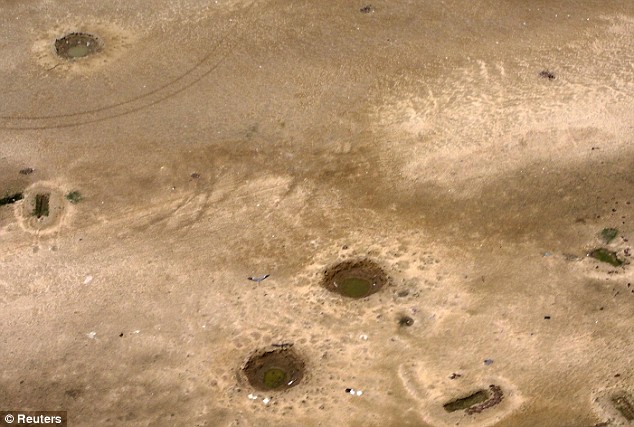
The former battlefront is dotted with craters in this view from the helicopter carrying UN Secretary General Ban Ki-Moon over the devastation
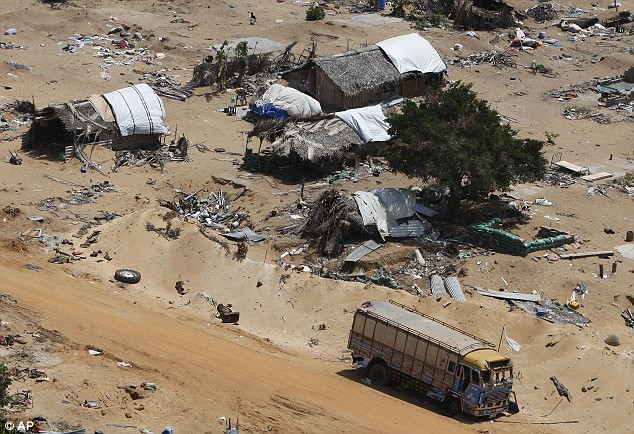
A flag still flies from a bus abandoned by the side of the road amidst the ruins of the town
The sandy coastal strip where the final battles of the quarter-century civil war were fought was dotted with patches of charred earth and deep recessions. Dark craters were visible amid the greyish earth along the coast.
One area was thick with endless rows of tents, many of them knocked down and damaged.
Abandoned vehicles were overturned, some reduced to burnt skeletons. Some huts with thatch roofs were destroyed, others had no roofs.
In one area near the tents, bunkers appeared to have been constructed of sandbags and barrels.
Along a nearby beach lay a large boat with the rebels’ roaring tiger emblem.
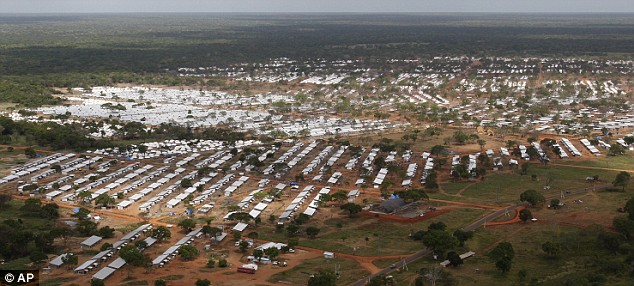
An aerial view of the displaced persons camps in Vavuniya in Sri Lanka, packed with Tamil refugees
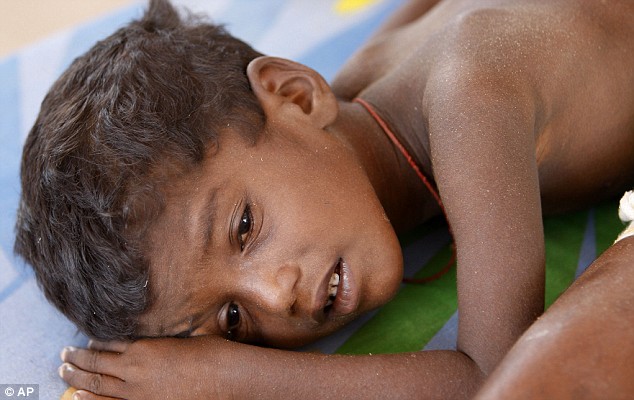
A sick child lies on a hospital bed in the camp, which is believed to be the largest displaced persons camp in the world
After touring the area, Ban said the trapped civilians must have undergone ‘most inhumane suffering’.
The government declared victory over the rebels Monday in the civil war that began in 1983.
In the final weeks, with the rebels boxed into a tiny coastal strip and tens of thousands of civilians trapped inside the battlefield, the government said it would no longer fire heavy weapons.
But government doctors in the area – as well as human rights groups and foreign leaders – said intense shelling continued, killing hundreds of civilians.
The U.N. Human Rights Council has planned a special session on Sri Lanka on Monday in Geneva amid international calls for a war crimes investigation into the military’s conduct.
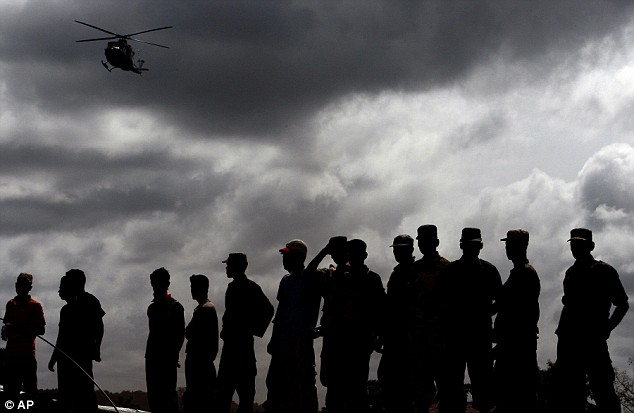
Military and local people watch as a UN helicopter lands at the camp
Military and local people watch as a UN helicopter lands at the camp
According to private U.N. documents, at least 7,000 civilians were killed in the final months of fighting.
The military said again Saturday it had not shelled the area, and blamed the craters on rebel fighters.
‘We heard many explosions even in the last days as they exploded their ammunition dumps,’ military spokesman Brig. Udaya Nanayakkara said.
But many of the trapped civilians, now living behind barbed wire in displacement camps, spoke of unrelenting shelling.
‘We walked for three days to get here. We were shelled and bombed. There was no food. Both sides were shelling us,’ said an elderly woman who gave her name as Lechchami.
Another woman, Krishnaleela, 42, said her family came under shelling from the military and one of her children was killed.
At the Manik Farm displacement camp, some civilians said there was little food or water. They complained they were not allowed to leave and that their male relatives had been detained by the military, presumably under suspicion they were rebel fighters.
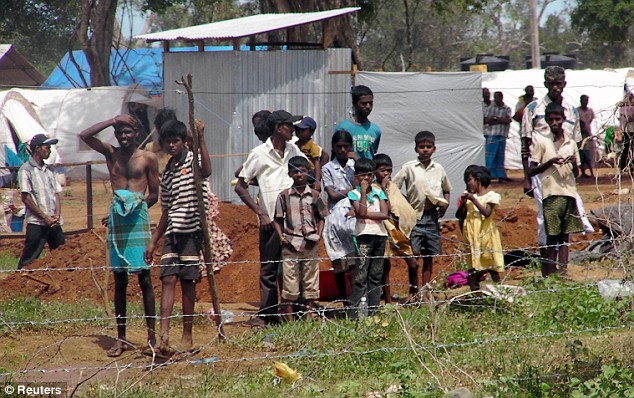
Victims of war: Tamil civilians stand behind a barbed-wire fence as they watch U.N. Secretary-General Ban Ki-moon tour their refugee camp
Victims of war: Tamil civilians stand behind a barbed-wire fence as they watch U.N. Secretary-General Ban Ki-moon tour their refugee camp
‘I don’t know where my husband is,’ Krishnaleela said.
Ban appealed to the government to quickly improve conditions for the nearly 300,000 ethnic Tamil civilians displaced by the fighting. He also called for aid groups to get unfettered access to the camps and welcomed President Mahinda Rajapaksa’s promise to resettle the bulk of the displaced by the end of the year.
‘We will try to work hard to make sure that promise is realised,’ he said as he toured the vast expanse of white tents neatly lined up in rows on dirt paths.
Roads between the tents were crammed with people, and barbed wire fences encircled the area, keeping the tens of thousands of civilians from getting out. Soldiers were stationed across the camp.
Mark Cutts, a senior U.N. humanitarian officer, said Manik Farm was erected almost overnight and is the world’s largest displacement camp.
‘There’s 200,000 people here. This is a very overcrowded place, a very big place, and there’s a lot of work still to be done. Conditions, you can see, they’re very basic,’ he said.
After his tour of the battlefield, Ban flew to the central city of Kandy. There he met with Rajapaksa after the nation’s top Buddhist monks presented the president with the country’s highest honor at a temple reputed to house the Buddha’s tooth.
Ban and other world leaders have called on Rajapaksa to quickly address the grievances of the country’s minorities in the wake of the war.
The Tamils, 18 per cent of the population, claim systematic discrimination and harassment by the Sinhalese majority, and have been fighting for their own homeland and independence.
[…] 2009: The Ruined Wasteland of Sri Lanka as 300,000 People are Displaced after War with Tamil Tigers […]